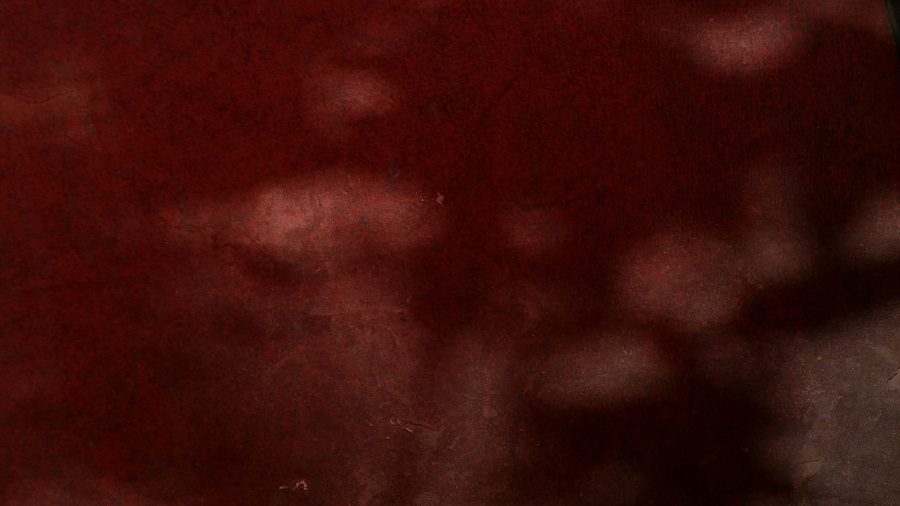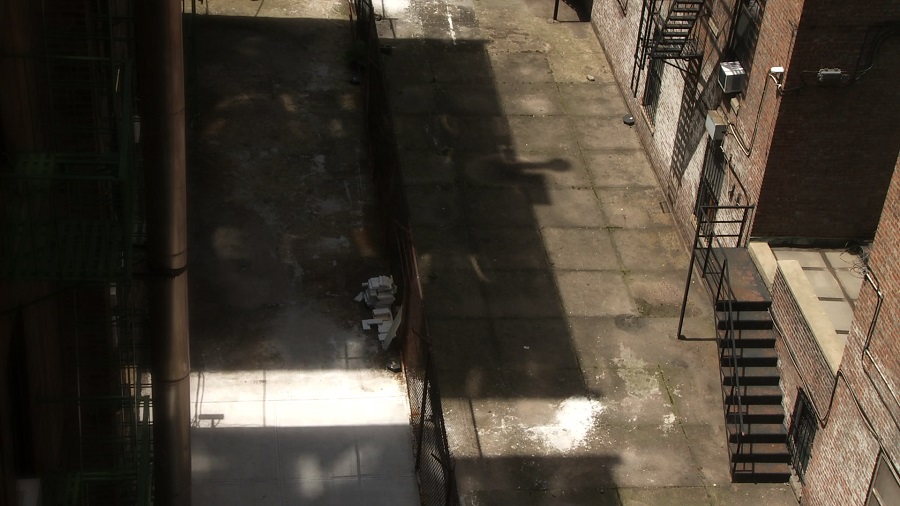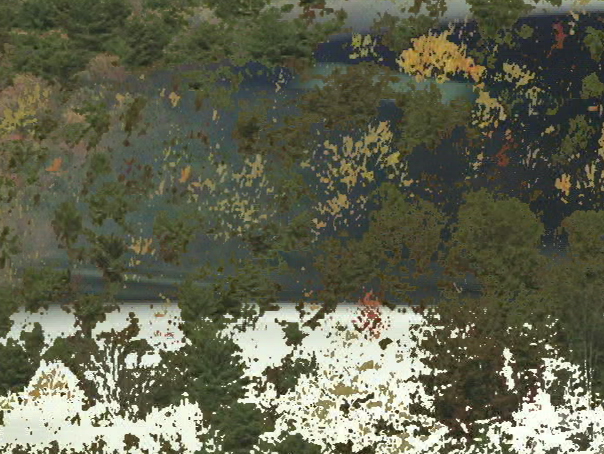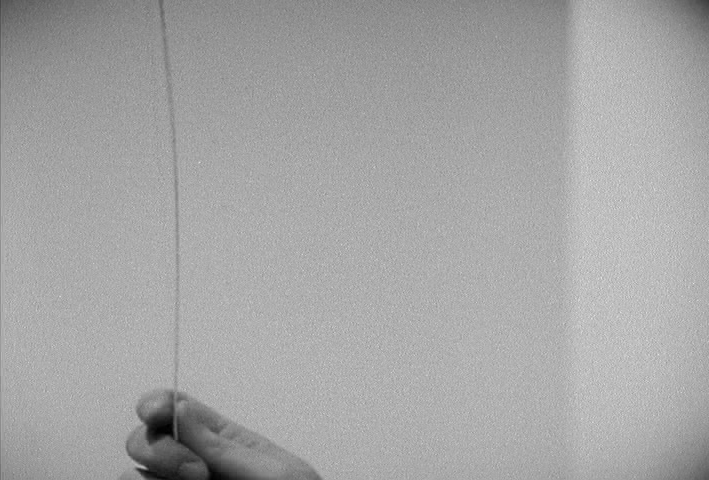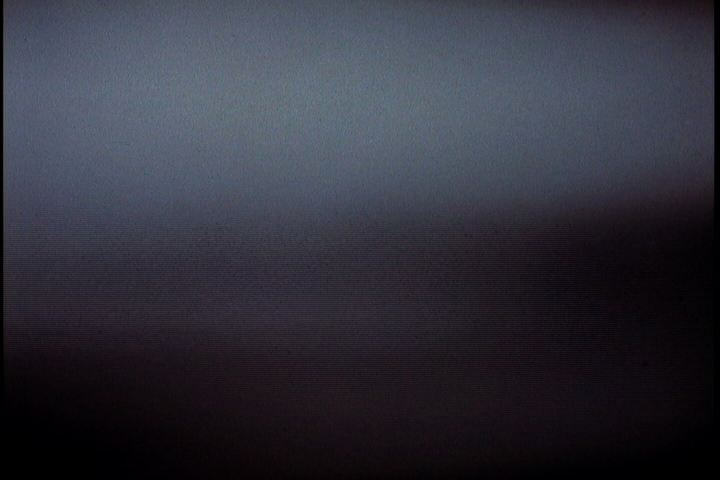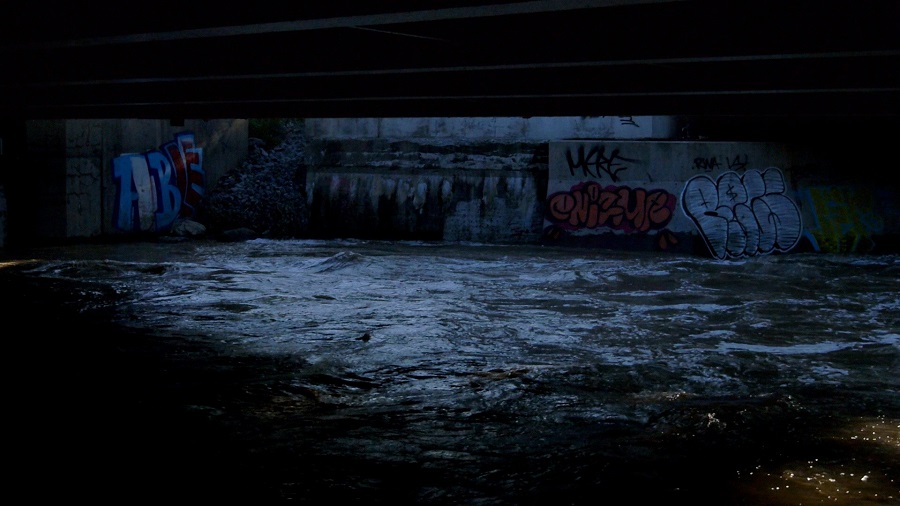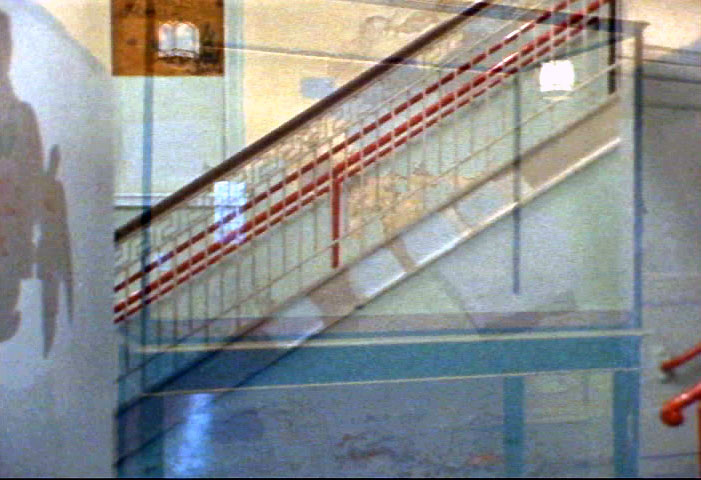February 23rd, 2014
4:30pm
The Marchesa Theater (map)
$10 General / AFS Member levels / ERC Pass
(Buy tickets here)
Experimental Response Cinema, in collaboration with the Blaffer Art Museum in Houston and the Austin Film Society, is excited to present a screening of work by Vincent Grenier! Grenier, a widely celebrated film / video maker who began working in the 70s, is an artist who brings a patient and revealing sensitivity to the image. Rigorous, beautiful, and with a wry sense of comedy, we are proud to present these very special works with Vincent Grenier in person!
“If Grenier’s work provides pleasures both anticipated (the formal beauty and exacting eye of a great media artist) and unanticipated (the many contradictions, misprisions, and perceptual paradoxes the works induce), his films and videos also seem to want to tell us, in very direct ways, that those pleasures are only partly of the artist’s making. They are also accidental and given to chance; they are also freely available. And so in a way, I think Vincent Grenier’s work, if I may call upon one of the hoary old saws of the avant-garde, aims to “teach us how to see,” but in ways a bit different than how that concept has been trotted out in the past by mythopoets and structuralists alike.” – Michael Sicinski (Moving Image Source)
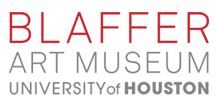
BLAFFER ART MUSEUM furthers the understanding of contemporary art through exhibitions, publications, and public programs of merit and distinction. As the GATEWAY between the University of Houston and the City of Houston, Blaffer Art Museum is a CATALYST for creative innovation, experimentation, and scholarship. Its exhibitions and programs are FREE AND OPEN TO THE PUBLIC, create community through dialogue and participation and inspire an appreciation for the visual arts as a VITAL FORCE in shaping contemporary culture.
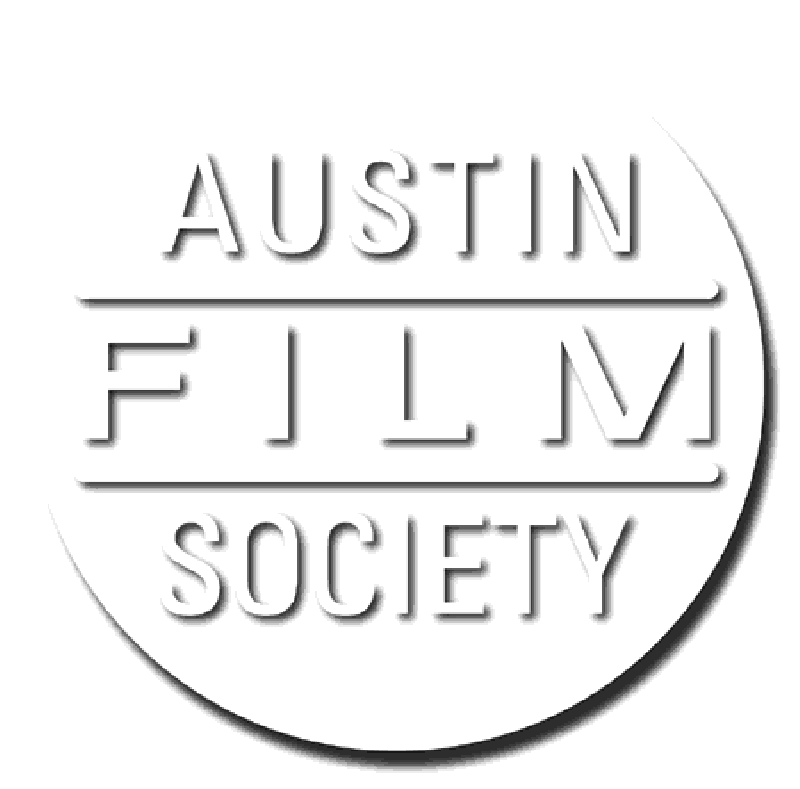 The Austin Film Society empowers our community to make, watch and love film and creative media. Through Austin Studios, which AFS opened in 2000 through a partnership with the City of Austin, AFS attracts film development and production to Austin and Texas. Gala film premieres and the annual Texas Film Hall of Fame Awards raise funds and awareness of the impact of film on economy and community. Austin Film Society is ranked among the top film centers in the country and recognized by the National Endowment for the Arts and Directors Guild of America. For more information on the Austin Film Society, visit www.austinfilm.org.
The Austin Film Society empowers our community to make, watch and love film and creative media. Through Austin Studios, which AFS opened in 2000 through a partnership with the City of Austin, AFS attracts film development and production to Austin and Texas. Gala film premieres and the annual Texas Film Hall of Fame Awards raise funds and awareness of the impact of film on economy and community. Austin Film Society is ranked among the top film centers in the country and recognized by the National Endowment for the Arts and Directors Guild of America. For more information on the Austin Film Society, visit www.austinfilm.org.
Program
Les Chaises
9 min / digital / sound / 2008
Two weather worn red vinyl chairs on an outdoor promontory oriented toward a “view”, stand as subjects and witnesses. The chairs themselves provide openings or internal views, into color fields, their standard issue “natural textures” upholstery, oval screens for the light projected through wind swept tree leaves. -VG
“With Vincent Grenier’s Les Chaises (2008), the suspended moment is loosened and stretched, and like the wind that blows throughout, there’s no sense of where it starts or stops. The HD views, which should quiet once and for all any remaining skeptics of the medium, are appropriately breathtaking; under the rustling leaves of a quiet afternoon subtle gradations of light and shadow, red and green, form. In one recurring shot, Grenier fixes on the vinyl surface of a red chair, inviting us to sit and get lost in the image. The mottled reds, seemingly endless in their variation, fill the screen, and become more than an image, more than just an abstract rendering of a commonplace object, but an experience of the sublime. In Grenier’s hands, the HD camera becomes a tool for discovery, a way of seeing, an open path.” — Shadows and Outlaws, The 12th edition of the New York Film Festival’s Views from the Avant-Garde by Genevieve Yue.
INTERIEUR INTERIORS (TO AK)
15 min / digital / silent / 1978
With special assistance of Ann Knutson.
“Grenier’s great skill is that by means of shifts of focus, by subtly altering light level and shadow, by moving the camera axis, by playing upon grain, contrast and surface texture, he can provoke constant mystery as to what exactly we’ve just seen, are seeing, will see next.” -Simon Field, Time Out, May, 1980.
“One striking aspect of INTERIEUR INTERIORS (TO AK) is that each specification of a spatial reading has a short perceptual life. If it is not renewed and reinforced the viewer soon loses it and is confronted again by an indeterminate space, which can be changed at will. Grenier relies on two kind of factors to achieve these temporary specifications: motion, which is itself unambiguous if in a direction parallel to the screen and which automatically defines a recession; and the insertion of a recognizable element. When the two factors appear together, even for a moment, the cinematic space is transformed into one of representation.” -Graham Weinbren and Christine N. Brinckman, Millenium Journal.
TABULA RASA
7.30 min / digital / sound / 1993-2004
Camera, production and editing by Vincent Grenier. Additional camera by Bill Rowley. Sound recording by Joel Schlemowitz.
Tabula Rasa was “one of the absolute stand out of Views From The Avant Garde (NY Film Festival) 04’.” Also on 2004 Top Ten Films List — Michael Sicinski, Online Journal “The Academic Hack”
Filmed in a South Bronx high-school, Tabula Rasa attempts through sound image juxtapositions, digital manipulation and layering to deal at once with the propensity to mislead and eloquence of the recorded image. The ambiguous qualities of appearances, so assiduously cultivated by institutions, the motivations found in the clues that tells the history of objects, colors, textures, architecture and ultimately, psychological states of mind are but some of the players in this poetic and cultural happening.
All the material for this digital video was initially shot on16 mm film, in June of 1993. thanks to a grant from the Canada Council. We hear the voices of mediation counselor Victor Hall and student John Cruz. The filming would not have been possible without the help of an extraordinary teacher Dan Sheehan.
Color Study
4.30 min / digital / sound / 2000
A humorous, digitally induced meditation on colors, motion and space from a few frames of road side fall panorama in upstate NY.
“It is interesting to think about Color Study in relation to the purely cinematic-photochemical nature of a work like Kurt Kren’s Asyl with its multiplicity of delicate composite imagery and overlapping seasons that create a feeling of all time being simultaneous. In Asyl, solar light cohabitates with the film – the emulsion receives singes and burns that inscribe the image and are reconstituted in projection as muted radiance. In Color Study, a cat’s eye like chatoyancy of splattered color, the precise mimicry of natural color combined with unnatural color fields, creates and breaks illusion. Color manufactures a kind of implied time lapse where it does not technically exist. A spatial jigsaw, combining the autumnal and the verdant. The invented light and color of the digital process creating an acid wash.” — Mark McElhatten
While Revolved
8 min / digital / silent / 1976
An elusive film that plays in a series of movements, on the fascination that can be had from watching the turbulent magnified grain. A slippery background flows, rises and sinks honing the focusing abilities of shadows, and unexpectedly producing an other magnified grain… –VG
Made with a grant from the Canada Council.
While Revolved: Pools of light and shadow displace each other as the camera describes an arc or spiral on a section of wall or ceiling. Periodically the motion stops, replaced by selective focus on a grainy object, creating a sense of wave motion in and out of the screen. This film is concerned with the projected, not just light or the emulsion or the illusion or the projector or the camera, but all of them. The surface of the film, the grain, is remembered when a similar but illusionistic surface appears (just as magnified), crossing the frame. Other times the grain is left to itself. There are the idiosyncratic focusing qualities of shadows acting as diaphragms inside the image. The elusive background confounds itself with the foreground. The notions of appearances and disappearances transform themselves in notions of time.
Armoire / Prologue (Prologue to ARMOIRE IN 4 PARTS)
3 min / digital / sound / 2007
The aviary in the mirror, in-flight hide-and-seek, mischief on the wing. – Rotterdam Film Festival
It was all started by a Red Robin who one day in the spring, obsessively went after his double in the large mirror at the end of our garden. Just having fun with the surrounding consequences regarding storage, openings, motion and nature among others. (VG)
“The secret might have been the unassuming wonder of Vincent Grenier’s Armoire, a film in which a small bird expands the edges of the frame by hopping and fluttering about. As the frame responds to his light, unpredictable movements, it is at times rushing sideways or holding still, shrinking and stretched in every imaginable permutation. And yet the frame doesn’t always manage to capture or contain the bird, who in the end darts out of sight. It is as if he is the true filmmaker, directing the scene and, with his own star exit, deciding when to cut.” — Genevieve Yue in SENSES OF CINEMA, Observation in Progress, Views from the Avant Garde, 45th New York Film Festival.
Surface Tension II
4 min / digital / silent / 1995
This film was shot in color but using the Kinemacolor process, a process which was used in 1915 to obtain fairly illusionistic colors from black and white films by filming and projecting them through synchronized red and green filters.
Back View
17.09 min / digital / sound / 2011
The Upper West Side has some of the tallest brick apartment buildings in NYC. The orderly but deserted and aging concrete courtyards, their metal stairs and shafts, register a dramatically changing atmosphere. This is a cinema that seeks to observe, obscure, shorten and protract, and redefine, while remaining open ended.
Watercolor
12.37 min / digital / sound / 2013
Water flows under an expressway and a railway. The path under these bridges never before seemed particularly attractive until this summer when I lingered and started to take pictures. I think the piece speaks for itself as it ended up going into so many different directions, emerging from concerns about space, the pictorial plane and a particularly interesting intersection between man made structures (both visually and aurally) and a changing, surprising nature. Watercolor (Fall Creek) exists between these necessary worlds, as time unfolds and remains difficult to comprehend.
What was, what has become, what’s left, what’s new, what is, what is made up, what is lighted, reflected, hidden, made transparent, or unknown, different rates of changes, matter of various kinds, all intent on affirming competing realities, spread themselves on the wide cinema screen both literally and figuratively. Where the how has as much to do with the is.
“Islands. O for God’s sake they are connected underneath” — Muriel Rukeyser
Bio
Vincent Grenier was born in Quebec City, Canada. He has lived largely in the US. mostly New York City and now Ithaca, NY. In spite of this, he was a frequent contributor to the Montreal Art scene of the 70’s and 80’s. He has made experimental films since the early seventies when he received an MFA at the San Francisco Art Institute in California. Grenier’s films have been shown in the United States, Canada and Europe at showcases such as the Museum of Modern Art in NYC, the Anthology Film Archives, the Pacific Film Archives, the Collective for Living Cinema and Cinéma Parallel in Montréal. His films and videos have earned him nine production grants from the Canada Council in the period between 1974 and1992, and in New York State, from CAPS (1979), NYFA (1995), ETC (1992 & 1994), NYSCA (2007-2008) and John Simon Guggenheim Foundation Fellowship (2010-2011).
He has made over two dozen films and since the late 90’s more than a dozen videos. Many of these videos were chosen in yearly selections of Grenier’s work at key avant garde film festivals such as Views from the Avant Garde of the New York Film Festival , the Rotterdam Film Festival, in the Netherland, the Onion City Film Festival, Chicago, and Media City Film and Video Festival, Windsor, Ontario. Grenier’s films and videos were the subjects of retrospectives at Media City, Windsor, Ontario and Images Film & Video Festival’s Canadian Images Spotlight, Toronto, both in 2006. Seven of his films & videos were curated in the Whitney Museum of American Art 1970-2000 American Century Film program. Films by Grenier are included in the Donell media library in NYC, the National Film Archive, Ottawa, the National Gallery of Canada, Ottawa, AGO, Toronto and at many other institutions in Canada and the US.
LES CHAISES, (9 min 2008), earned Jury’s Choice, one of the first prizes, Black Maria Film Festival 2009, and Honorable Mention at Media City Film & Video Festival, Windsor ON; TABULA RASA (7.5 min. 2004), 2nd prize Media City Festival, Windsor, Canada; Views from the Avant Garde, New York Film Festival and Onion Film & Video Festival, HERE (6.5 min, 2002) Awarded Gold for best Experimental film, New York Film Expo, COLOR STUDY (4.5 min, 2000) Rotterdam Film festival, London and Toronto Film Festivals , Lincoln Center, Second prize at the Black Maria Film Festival and MATERIAL INCIDENTS, (6 min. 2001), Rotterdam Film Festival. & New York Video Festival, FEET (27 min., video, 1994) won second prize at the 1995 Black Maria Festival and was shown in the WNET series Reel NY. His films include: OUT IN THE GARDEN (1991)–Best Documentary, 1992 Ann Arbor Film Festival, Best Experimental Documentary, 16th Atlanta Film/Video Festival, shown on WNET and London Film Festival; YOU (1990)–Black Maria Festival; TIME’S WAKE–(1987) Prize Winner Black Maria Festival; INTERIEUR INTERIORS (1978)–Prize Winner, San Francisco Are institute Film Festival; WORLD IN FOCUS (1976) Second Prize Winner, Ann Arbor Film Festival; and WINDOW WIND CHIMES (1974)– Prize Winner, Bellevue Film Festival in Oregon.
Grenier curently teaches at Binghamton University and lives in Ithaca New York.
